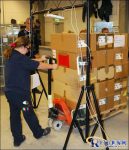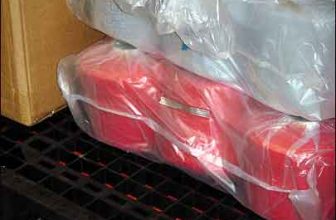
Swedish military factory tests the application of UHF RFID technology in uniform inventory management
[ad_1]
After more than one year of application testing of passive RFID tags in the uniform tracking process, the Swedish military factory decided to adopt UHF RFID solutions in the next 2-5 years. The RFID solution will also be used to track personal weapons and equipment to improve the efficiency of multi-regional management.
Beginning in 2004, Swedish military factories began testing various RFID solutions to ensure the visibility of uniforms shipped overseas.What should be called SCARRFIDSupply chain solutions, mainly testing active RFID tags to monitor uniform goods shipped overseas. In 2012, FMLOG, the logistics management department of the Swedish military factory, and FMV, the raw material management department of the Swedish military (mainly responsible for providing equipment, supplies and other related services for the military) jointly conducted a series of related tests on passive RFID technology. The test process is mainly for uniforms. Tracking of inventory management before distribution to soldiers.

The test program includes labeled uniforms, trays filled with uniforms, and embedded EPC Gen 2 UHFReaderRead and write channels and four read and write antennas. The read-write channel and read-write antenna are mainly used to read the ID code on the uniform tag.
Since 2004, HiQ has assisted the Swedish military’s raw material management department in FMV testing, evaluation and research and development of RFID solutions. In order to find the best solution for tracking uniform containers shipped abroad, the Swedish military’s raw material management department FMV and HiQ conducted research on the solutions adopted by other foreign military organizations, and finally decided to adopt Savi’s solutions, including active RFID. Tags, receivers and corresponding data management software. Among them, active RFID tags are installed on containers and pallets. The SCAR program has been accepted by the military, but the implementation time has not yet been announced.
A few years ago, when testing active RFID tags, FMLOG, the logistics management department of the Swedish military, expressed great interest in implementing passive RFID tags to track uniforms and other equipment, hoping to reduce the need to perform inventory counting through RFID solutions. time. Through understanding, the use of passive RFID tags can simplify the work process and make the real-time data inventory more accurate.
In 2011, the Swedish military organization began to test passive EPC UHF RFID tags, mainly to test the management process of soldiers’ equipment, and to solve the problem of equipment inventory management.
Several RFID read-write channels have been installed in the military warehouse in the Revingehed region of southern Sweden, and are also equipped with handheld RFID readers and UHF EPC passive RFID tags. HiQ refused to disclose the manufacturer and model of tags and readers.
After the finished uniform is shipped to the warehouse, the worker first enters the product number into the SAP software of the factory. Warehouse management personnel perform warehouse inventory once a year and manually record the corresponding data. It takes about 30 hours to complete. With the implementation of the RFID test program, all tags are pasted with passive UHF EPC tags. When warehouse workers perform inventory counting, it only takes about one hour to complete, which greatly improves the efficiency of inventory counting.
The RFID reading and writing channel consists of a reader and four antennas, which mainly read the ID code of the tag. Pass the reversible containers and pallets loaded with uniforms through the read-write channel. The main goal is to test the readability of tags in different scenarios. The test results show that the tag reading rate can reach 99%. At the same time, the factory also tested the PDA version of the RFID reader, but the test results were not satisfactory.
Based on the good test results, the Swedish military recognizes the application of passive RFID technology in inventory management and plans to update its software system in 2015 to support the implementation of RFID technology.
From 2015 to 2018, the Swedish military plans to apply passive RFID technology to soldier equipment management. At the same time, it is also considering applying this technology to equipment maintenance process management.
[ad_2]




